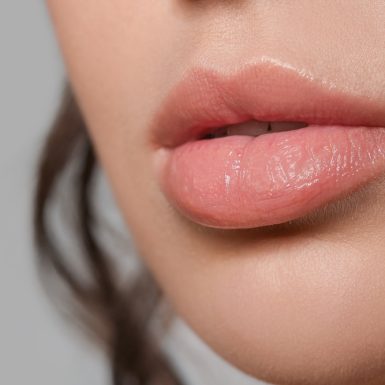As we age, fine lines and wrinkles begin to appear on our skin, particularly on the face.
Although a natural effect of growing older, these signs of aging are common aesthetic concerns for many individuals. To address these issues, various cosmetic treatments are available, with Botox and Dysport being two of the most popular options.
This article will compare Botox and Dysport to help you make an informed decision about which treatment may be best suited to your needs.
What is Botox and How Does It Work?
Botox is a well-known cosmetic treatment that involves injecting a neurotoxin produced by the bacterium clostridium botulinum into the skin. Its discovery is a fascinating story.
In 1897 a group of musicians who had been performing at a funeral in Belgium fell ill, having eaten the same smoked ham. The bacterium responsible for their poisoning was subsequently studied by scientists and found to have a powerful paralytic effect.
In the 1970s American ophthalmologist Dr Alan Scott experimented with using small quantities of the toxin while performing eye operations to relax the patient’s muscles. The treatment was a resounding success and Botox was born; its paralytic effects were soon extended to use in cosmetic treatments.
This neurotoxin blocks nerve signals to the muscles, resulting in temporary muscle paralysis. By preventing muscle contractions, Botox helps to reduce the appearance of wrinkles and fine lines, particularly on the forehead, around the eyes (crow’s feet), and between the eyebrows (glabellar lines).
What is Dysport and How Does It Work?
Dysport, like Botox, is an injectable treatment that uses a form of botulinum toxin to relax facial muscles and diminish wrinkles. While it works just like Botox by limiting nerve signals to the targeted muscles, Dysport has a different formula concentration and may diffuse differently within the tissues, potentially leading to variations in effectiveness and duration of results.
Because it is more diluted, and spreads more quickly over wider areas, Dysport is often used to treat larger areas of affected skin, such as the forehead.
Botox vs. Dysport: a comparison
Although both treatments work in similar ways, and are derived from the same active compound, there are differences is usage, side effects and results. Let’s run through those points of difference systematically.
Treatment Areas
Both Botox and Dysport are effective for treating various facial areas, including the forehead, crow’s feet, and glabellar lines.
However, some studies suggest that Dysport might spread more easily, making it a better option for larger areas like the forehead. On the other hand, Botox is often preferred for smaller, more precise areas due to its more localized effect. Botox is often used, for instance, on laughter lines, and wrinkles at the sides of the eyes.
Procedure Time and Sensation
Both Botox and Dysport treatments are relatively quick, typically taking about 15-30 minutes to complete. This makes them convenient options for those with busy schedules who are looking for effective anti-aging solutions without significant time commitment.
The sensation experienced during the injections is generally mild, often described by patients as a slight pinch or sting. To ensure maximum comfort, practitioners may apply a topical anaesthetic to the treatment area before the injections. This helps to minimize any discomfort, making the procedure as pleasant as possible. In some cases, ice packs may also be used post-treatment to reduce any immediate discomfort and swelling.
Patients often appreciate the minimal downtime associated with these treatments, allowing them to return to their normal activities almost immediately.
Required Sessions
To achieve optimal results, both Botox and Dysport treatments typically require multiple sessions. Initially, treatments are performed every 3-4 months. This frequency helps maintain the reduction of wrinkles and fine lines as the effects of the neurotoxin wear off over time.
After the initial series of treatments, maintenance sessions are scheduled based on the individual’s response and desired outcomes. Some patients might find that the interval between sessions can be extended as their facial muscles adapt to the treatment, potentially needing touch-ups less frequently.
Regular follow-up appointments with a cosmetic professional are essential to monitor progress and adjust treatment plans accordingly. This ensures that patients continue to achieve their desired aesthetic results.
Aftercare
Aftercare for both Botox and Dysport is straightforward, making these treatments very user-friendly. Patients are advised to avoid strenuous activities, lying down, or rubbing the treated areas for at least 4-6 hours post-injection to prevent the neurotoxin from migrating to unintended areas.
It is also recommended to avoid excessive heat exposure, such as saunas or intense workouts, for the first 24 hours after treatment. Patients should refrain from consuming alcohol or taking blood-thinning medications before and after the procedure to minimize the risk of bruising.
Swelling at the injection site, or mild redness, is common and usually subsides within a few hours. Applying a cold compress can help alleviate these symptoms. Following these aftercare guidelines helps ensure the best possible results and reduces the risk of complications.
Results and Duration of Effect
Results from both Botox and Dysport typically begin to appear within a few days of the injection, with full effects visible after about two weeks. This gradual onset allows patients to experience a natural-looking improvement in their facial wrinkles and fine lines.
Botox results last 3-4 months, providing a significant reduction in the appearance of wrinkles during this period. Dysport’s effects might last slightly longer for some individuals, often up to 5 months. The longevity of the results can vary based on factors such as the area treated, the patient’s metabolism, and the amount of neurotoxin used.
For sustained results, follow-up treatments are necessary. Regular maintenance sessions ensure that the youthful appearance is preserved, allowing patients to continue enjoying the benefits of these cosmetic procedures over time.
Cost Comparison
The cost of Botox and Dysport can vary based on factors such as the number of units used, the treatment area, and the provider’s expertise. Generally, Dysport is slightly less expensive per unit than Botox.
However, since Dysport may require more units for the same treatment area, the overall cost difference may be negligible. Consult with your Spamedica skincare specialist to obtain an estimate for both treatments.
Ideal Candidates
Ideal candidates for Botox and Dysport are individuals seeking to reduce the appearance of facial wrinkles and fine lines without undergoing invasive surgical procedures. Candidates should be in good overall health, have realistic expectations, and be free from neuromuscular disorders. If you are not certain if this treatment is for you, do consult with one of our skincare professionals.
Potential Side Effects and Downtime
Mild swelling, bruising, and redness at the injection site are side effects common to both treatments. These side effects are typically short-lived, resolving within a few days.
There is minimal downtime associated with either treatment, allowing patients to return to their normal activities immediately after the procedure.
To help you decide more easily which treatment might be right for you, here’s a table summarising the differences between Botox and Dysport:
| Botox | Dysport | |
| Treatment Areas | Forehead, crow’s feet, glabellar lines | Forehead, crow’s feet, glabellar lines |
| Procedure Time | 15-30 minutes | 15-30 minutes |
| Onset of Results | 3-5 days | 2-3 days |
| Duration of Effects | 3-4 months | 4-5 months |
| Cost | Higher per unit | Lower per unit, more units needed |
| Side Effects | Mild swelling, redness, bruising | Mild swelling, redness, bruising |
Botox or Dysport: Which One to Choose?
Deciding between Botox and Dysport depends on individual preferences, treatment goals, and specific facial concerns. Consulting with a dermatologist or cosmetic professional can help determine the best option for your needs.
In general, we might suggest that if your forehead is the primary area of concern, then Dysport may be the way to go, while Botox would better suit smaller zones of fine lines or wrinkles.
Additionally, dermal fillers are another popular option for facial rejuvenation, and you can learn more about the differences between Botox and dermal fillers in our comprehensive Botox vs. Dermal Fillers article.
FAQs
Is It Possible To Combine Botox and Dysport?
Yes, combining Botox and Dysport treatments is possible, though using one or the other is more common.
This combination may be considered based on specific patient needs and treatment areas. For instance, Dysport might be used for larger areas like the forehead due to its wider diffusion, while Botox could target precise areas such as crow’s feet or the “11 lines” between the brows.
Is Dysport Safer Than Botox?
Both Dysport and Botox are FDA-approved and considered safe when administered by a qualified professional. They have similar safety profiles, with common side effects including mild swelling, redness, and bruising at the injection site. These side effects are typically short-lived, resolving within a few days. It’s crucial to have treatments performed by experienced practitioners to minimize risks and ensure optimal results.
Is Dysport or Botox Better for 11 Lines?
Both treatments are effective for the “11 lines” between the eyebrows. The choice may depend on personal preference and how each product interacts with your facial anatomy.
Botox may provide a more localized effect beneficial for these specific lines, while some might prefer Dysport for its quicker onset of results.
Does Dysport Migrate More Than Botox?
Dysport tends to diffuse more widely than Botox, making it advantageous for treating larger areas like the forehead. This characteristic allows Dysport to cover broader areas with fewer injections.
However, precise administration of Dysport is required to avoid affecting unintended areas. Conversely, Botox’s localized effect suits smaller, targeted areas.
Are the Results of Botox and Dysport Natural-Looking?
When administered by a skilled practitioner, the results of Botox and Dysport can look very natural. The goal is to reduce wrinkles and fine lines while maintaining natural facial expressions.
A thorough consultation with your provider ensures that the treatment plan achieves a subtle, natural-looking enhancement.
Are There Any Long-Term Side Effects?
Long-term side effects from Botox and Dysport are rare when experienced professionals administer treatments. However, repeated treatments over many years might lead to the development of antibodies that can reduce the effectiveness of the neurotoxin.
Discuss any concerns with your healthcare provider to ensure safe and effective treatment. To explore your options further, schedule a consultation with a cosmetic professional at SpaMedica today.






